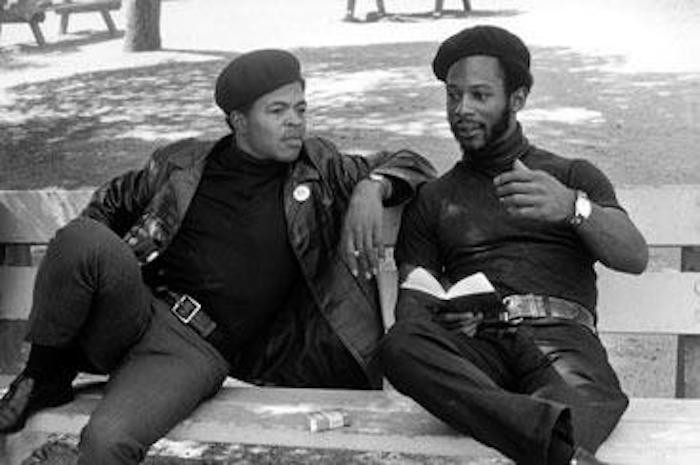8 Steps for those ready to organize and act

[Originally published in 2016 on Blavity.com]
I went to the Million Man March last year for a call to action. I wanted to know what black people would do when another officer killed one of us. I didn’t get that, unfortunately. So now I’m thinking regionally. While in D.C., I did peep and ‘preciate the slogan of some from Missouri, however: “Ferguson is the ‘or else.’”
If an officer yanks up one of our babies, if another one of us is murdered behind bars and our murderer goes free, killed for a broken taillight, for selling CDs… Once we determine that what’s happened to us (again) is unacceptable, what will we do here in Savannah? What will you do in your city?
I created this eight-step process for others who are tired of being tired of the same things their mama and her mama and her mama and her mama and her mama were sick and tired of. It’s designed to help us organize and act. And because laws vary by state and because no two groups are (and probably should not be) identical in need and thought, there’s plenty of room to modify your fight-back accordingly.
Step 1: Define your goals based on your needs and beliefs
Is the sole point of your organization to stop police officers from murdering the community and getting away with it? Or are you also interested in tackling other issues plaguing our people? Write it out. Need inspiration?
Here’s the Black Panther Party’s 10-Point Program.

Step 2: Identify the organization’s needed roles (and the risks associated with them)
You ain’t writing this out just to be doing it. You’re defining these goals to make them happen. That said, you’ll need people to help you. You don’t necessarily have to know their names, but the roles are a great starting point. If you don’t know the names of the roles, go with what you have. Example: Writers, donors, people who have access to printing, babysitters, lawyers, researchers, spokespeople, people willing to protest, etc.
Step 3: Peep the strengths and weaknesses of those who’ve gone before us
This is where your researchers can come in handy. It’s also a good idea to know a good bit before organizing. Read: Revolutionary Suicide, Angela Davis, Assata, Tupac Legacy, and other (auto)biographies of your favorite revolutionaries. And watch The Black Power Mixtape 1962–1975 (on Netflix).
Google nationalist and socialist organizations (which aren’t limited to black folks or America) and assess what they did really well and what led to their dissolution (i.e. sexism, federal infiltration, and irreconcilable differences).
Use this information to evaluate the internal and external threats to your organization, as well as your opportunities. It’s called a SWOT (strengths, weaknesses, opportunities, threats) analysis, and it’s what organizations and corporations use all the time to collect the raw materials needed to strategize.
Step 4: Gather and organize
Do all of this before gathering your people? Yep! Afterward, it might be necessary to repeat steps one through four, collectively. Make the call on social media, especially now while the issue is at the front of everyone’s mind. We’re all fed up, we all want change, and we’re all wondering why no one has busted a move yet. Lastly, if you only have four people to begin with, don’t let that stop you.
Step 5: Learn the local and federal laws
After someone is murdered by a police officer (and before he climbs in his bed that night), what are the next steps? Usually, backup arrives, the ambulance is called to officially declare them deceased, then the yellow tape marks off the area for the investigation to begin.
What happens next for the police department? What happens next for yourorganization? If the officer gets off, what will you all do after that? If you intend to carry arms, be especially mindful of the laws and risks involved.
Step 6: Plan your moves
Create the plan and lay out the vision so everyone can foresee their power and role in it. People respond far better to specifics and clear call to action. Then when it happens again (because it will), we’re not organizing, we’re ready to move — with or without those talking out of the sides of their neck. As you draw the plan, you’ll identify more needs. Some on the ground, most behind the scenes.
Are you protesting? Flooding the courtroom? Taking up arms? Boycotting? City council meetings? Establishing what-to-do-if-you’re-pulled-over workshops? Walking off jobs? All of the above? When will your organization do what? Are all cases handled the same? You can’t foresee everything, but you can give yourself a good starting point.
Step 7: Know what to expect
And don’t fall for the bullsh*t. The revolution demands that the system be changed. Reforms are created by the system to calm you down. Electing a black mayor won’t shut us up. Hiring 100 black youth this summer won’t shut us up. Paying the victim’s family might shut them up via a gag order, but it won’t shut us up. Get the point? And if your organization is really rocking the boat, expect to blamed for stuff that has absolutely nothing to do with y’all.
Step 8: Prioritize self-care and self-reliance.
The burnout is real. Scrolling social media alone will wear you out, but actually pulling up your sleeves and going to work is a whole ‘nother level. It’ll wear on you physically, mentally, spiritually, emotionally and probably financially. Taking care of yourself is a critical part of the struggle.
In the words of Audre Lorde, “Caring for myself is not self-indulgence, it is self-preservation, and that is an act of political warfare.” Once you’ve organized and planned your moves, racial dignity and self-reliance (both objectives of the Black Power movement, not to be confused with the Black Panthers) are great goals to tackle. The Panthers, for instance, had a free breakfast program, free medical clinic, they helped the homeless find housing, and gave away free clothing and food to those in need. Be there for the community before something pops off.
Note: You ain’t gotta start all of this from scratch. If someone in the community is already helping the homeless, support them. If an organization is already supporting our youth or elders, see what they need.
And for god and goddess’s sake, support black businesses. Money is power. In 24 hours, Issa Rae raised more than $300,000 for Alton Sterling’s children. I’m sure you know of plenty more jaw-dropping fundraising examples. Let’s keep our money circulating amongst ourselves as much as possible. After all, peace, power and prosperity is what we’re after.
If you like this post, you’ll love the book. Get yours. If you wanna drop a dolla or two in our Cashapp for all the love + time put into the research and writing, do so here: $TrelaniMichelle

